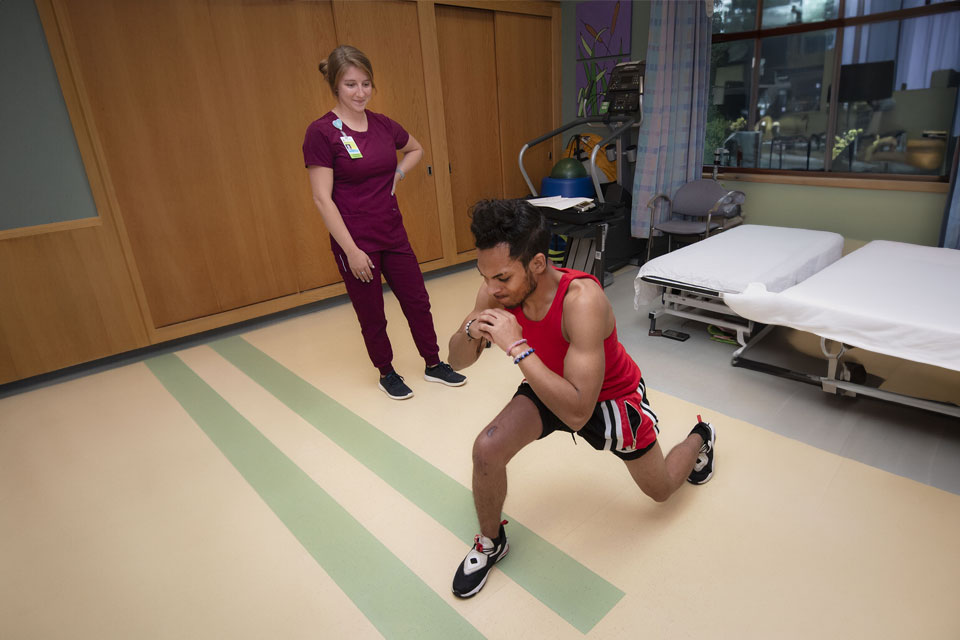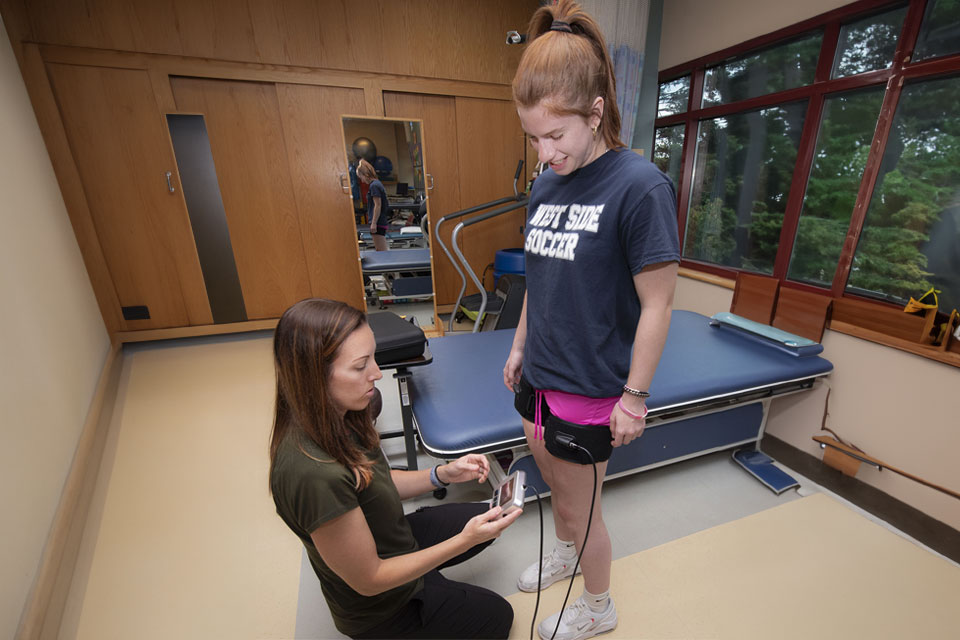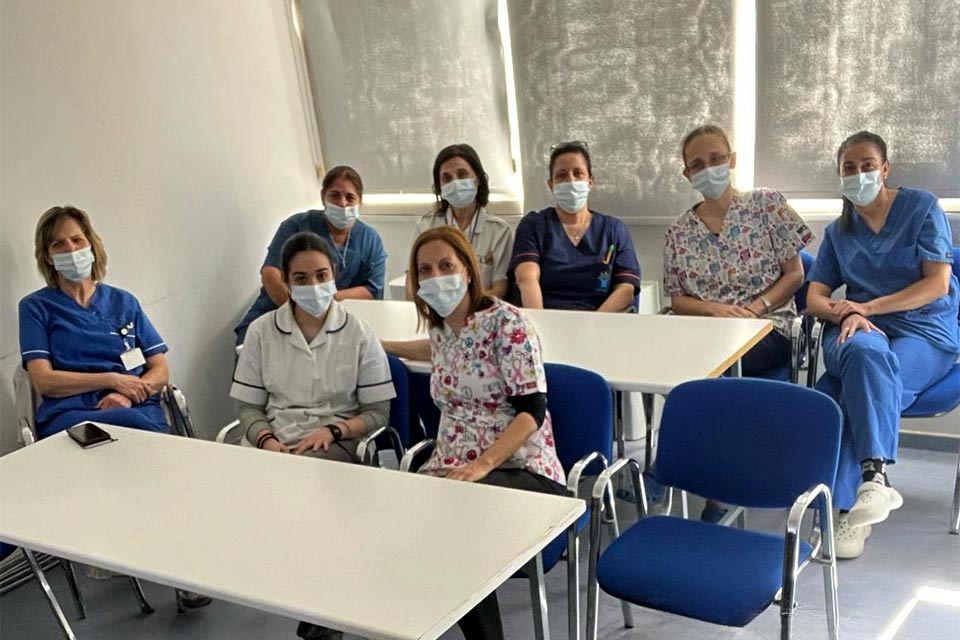Keeping a Competitive Edge at Shriners Children’s New England

Kamryn Wisneski-Filosi, PT, D.P.T., incorporates blood flow restriction therapy into a physical therapy session with patient Javian at Shriners Children's New England.
When a child is recovering from an injury or surgery, they look forward to returning to their favorite activities as soon as possible. Using a new strength training method called blood flow restriction therapy, or BFR, physical therapists at Shriners Children’s New England are helping patients reach that goal. This technique especially appeals to young athletes as they strive to return to high levels of performance.
“BFR is particularly beneficial for patients who have just had surgery, or have an injury that prevents them from exercising at their fullest potential,” said Lynn Taylor Glass, PT, D.P.T., a physical therapist at Shriners Children’s New England who performs BFR. “It has become more popular in the last decade, with a large field of research to support its benefits.”
Here’s how it works: A special cuff that looks like a blood pressure cuff is placed on the patient’s arms or legs, depending on the area being strengthened. When the cuff applies pressure, blood flow to the limbs is reduced. This lowers the amount of available oxygen to muscles. Pressure is maintained while the patient performs exercises with very low weight and many repetitions.
According to Lynn, BFR short circuits the process of building muscle. “By lowering the amount of available oxygen to the muscles, BFR accomplishes the same amount of work as higher intensity exercise without stressing damaged joints,” she explained. “We are still creating the chemical response that the body needs to build strength, we’re just getting there in a different way.”

Lynn Taylor Glass, PT, D.P.T., prepares patient Carlee for a workout using blood flow restriction therapy to help her gain strength after knee surgery.
BFR can be introduced early in a patient’s recovery, which is welcome news for young athletes. “Many patients enjoy going to the gym and want to know how they can get that same effect as they recover from an injury,” said Kamryn Wisneski-Filosi, PT, D.P.T., a Shriners Children’s New England physical therapist who is also trained in the BFR technique. “BFR gives them the same burn they get from a good strength workout.”
When 18-year-old Carlee required a series of knee surgeries after a high school soccer injury, she missed her regular gym workouts. BFR was part of her treatment plan for physical therapy at Shriners Children’s New England. “Seeing the muscle atrophy in my leg was a struggle for me, so I was excited to try BFR,” said Carlee. “When I could feel the burn after a workout and see growth in my quads, I felt better about myself.”
BFR is recommended for children ages 12 and older. Therapists first discuss the method with patients and families to determine their interest. Patients require clearance from their surgeon to begin BFR, and must not have any open fractures, cardiac problems, infections, vascular problems or a history of blood disorders. BFR can be uncomfortable for some patients, and there are ways to adjust to this experience. Therapists can adjust the pressure from the cuff to lessen the level of blood flow restriction. If patients decide they do not prefer this treatment technique, therapists discontinue its use in the session and in all future sessions.
“We introduce certain techniques at different phases of healing as patients gain strength after surgery,” said Lynn. “If they enjoy BFR, we try to schedule it during as many sessions as we can to help them reach their goals. We tend to use it with athletes because they are the most driven to get back to their routine and want a workout that helps to build the muscle they need.”
Javian, a high school lacrosse player who also suffered a knee injury, began physical therapy at Shriners Children’s New England after surgery for a torn anterior cruciate ligament. Therapists started using BFR early in Javian’s recovery, and he was pleased with the results. “I feel like it speeds up the process of recovery,” he said. “I loved it because I got a good leg workout in, and it helped me to see so much improvement throughout my recovery.”
Keep In Touch
Join our mailing list to stay up to date on everything that's happening at Shriners Children's.



